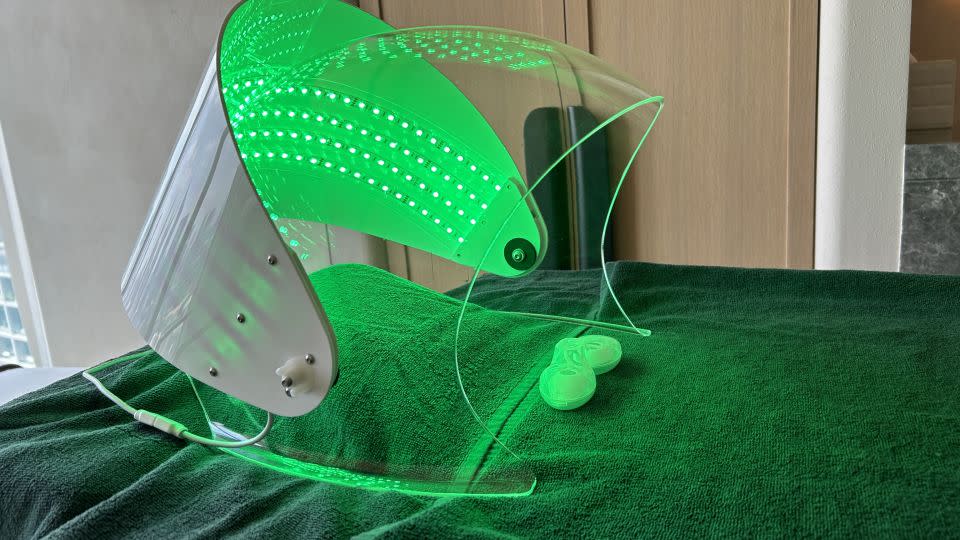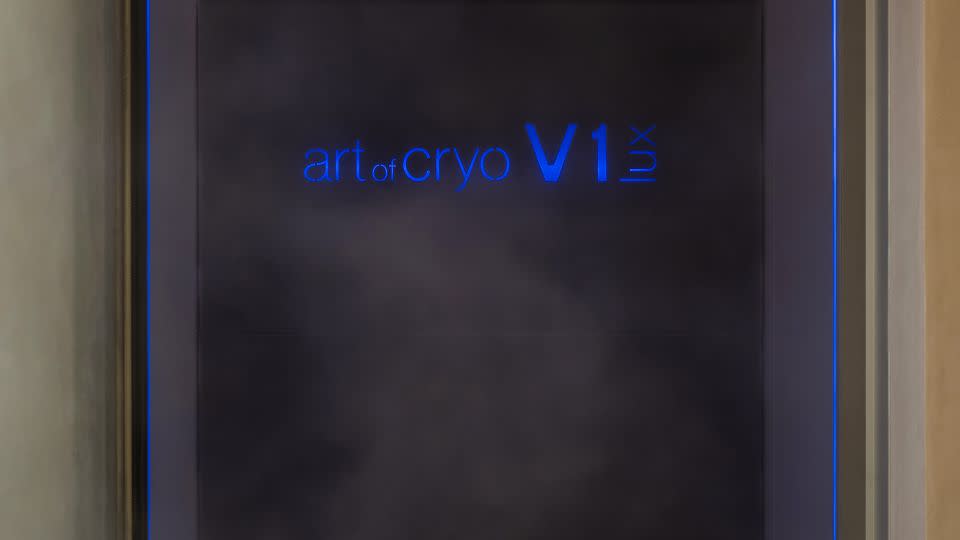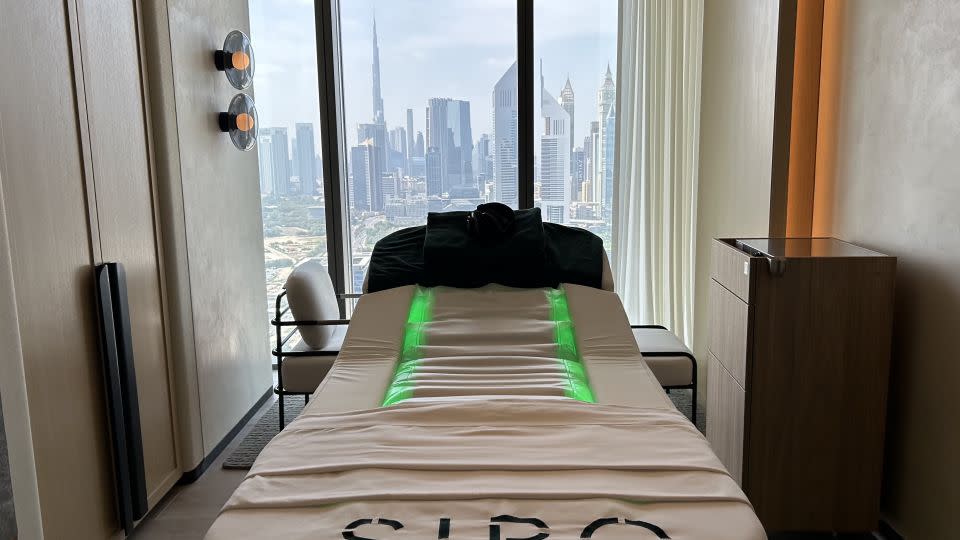Cryogenic chambers and infrared capsules. This ‘fitness hotel’ is taking wellness tech to the next level
Editor’s Note: This CNN series is, or was, sponsored by the country it highlights. CNN retains full editorial control over subject matter, reporting and frequency of the articles and videos within the sponsorship, in compliance with our policy.
Stepping into SIRO’s “recovery lab” is more like walking through a space station than a spa. There are cryogenic chambers, touchless vibroacoustic therapy beds, and an MRI-like infrared capsule that looks clinical rather than calming.
“The industry is evolving,” says Desmond Cawley, hotel manager at SIRO, One Za’abeel. It styles itself as Dubai’s “first fitness hotel,” catering to professional athletes and their fitness-focused lifestyles, and was designed in consultation with AC Milan football club, Olympic swimmer Adam Peaty and boxer Ramla Ali.
Its 2,000-square-foot gym is packed with state-of-the-art equipment that can track and analyze performance, smart scales and body composition analysis tools, and an app that helps guests customize their stay, from nutrition to training. Meanwhile, rooms feature alarm clocks linked to the guest’s circadian rhythms, and anti-gravity rocking chairs; and in the recovery lab, treatments are less about relaxation and more about muscle recovery.
“An example of that is the cryotherapy: great for (reducing) inflammation and kickstarting your metabolism,” says Cawley, adding that people generally need to have experience with ice baths before trying the cryo-chamber, which is cooled to a crisp minus 85°C (minus 121 Fahrenheit).
Another “cool piece of space-age technology” is the MLX i3Dome, which uses “far infrared technology for muscle soreness,” says Cawley. This kind of light therapy treatment has its roots in NASA’s experimentation with red light therapy in the 1990s to boost plant growth in space and help heal wounds in astronauts. Since then, it’s been explored for a range of uses, including most recently, skincare. While the “dome” acts as a sauna, a light therapy helmet provides a touchless facial, using red light for collagen production, green light for an antibacterial cleanse, and blue light for “problem skin” such as eczema, psoriasis, or acne.

These are specialized therapies, rarely found outside of boutique clinics — and certainly not in most hotels, which even in the five-star category, have often treated fitness and health as an “afterthought,” says Cawley.
But wellness is now a global, multi-trillion-dollar industry that brands like SIRO (and its parent company Kerzner International) are integrating into the foundations of their hospitality concept. Its Dubai location is just the beginning: SIRO, Boka Place in Montenegro will open later this year, and three more locations are already in the works.
“Everyone has a unique physiology, different wellness goals, aspirations,” says Cawley. “Everything (we do) is about optimizing performance, mitigating recovery times to get the individual back to doing what they love, whether that’s on the football pitch, on the tennis court, or the gym.”
From ‘Goopy’ wellness to billionaire biohacking
This tech-centric version of wellness is a marked departure from the “Goopy decade” of yoga, crystals and green juice detoxes, says Beth McGroarty, research director at the Global Wellness Institute.
“This is something that’s been popularized by the billionaire tech bros who are chasing, in some cases, $2-million-a-year regimes to try to fight death,” says McGroarty of the “super medical, very high-tech, very complex” hard care trend that is emerging. Known as “biohacking,” the trend includes longevity clinics and weight loss drugs like Ozempic as people try to lower their biological age.
One factor driving this trend is the pandemic: not only did it necessitate the need for “touchless” treatments, it also drove a desire for more scientific health solutions, says McGroarty.
But high-tech doesn’t always equal scientific. “Some of it feels quasi-scientific,” McGroarty says, pointing to nutrient-boost IV drips, which have very little evidence to support their efficacy outside of a doctor-prescribed, hospital setting. “Sometimes I think there’s a little bit of science-washing going on,” she adds.
SIRO isn’t alone in targeting athletic travelers with high-tech therapies: fitness club group Equinox launched its high-tech flagship hotel in New York City in 2019, and is planning to open 33 properties over the next decade. Established medical-wellness retreats SHA Wellness and Clinique La Prairie are both expanding beyond their European flagships, with the latter opening an “urban longevity hub” at One&Only One Za’abeel, just a few floors above SIRO in Dubai.

And at home, people might not be using cryogenic chambers every night, but data-led wellness is fast becoming the norm. Most smartwatches are now capable of gathering medical-grade information about your heart rate, sleep patterns, and blood oxygen, and these wearables “are only going to keep getting more sophisticated” and sleeker, like the Oura ring, a discreet tracker that looks like jewelry, says McGroarty.
With the increased accessibility of generative artificial intelligence, McGroarty sees even more potential for smart diagnostics — but adds that there’s a need to create boundaries and evaluate where it’s useful. “We underestimate the stress and anxiety of being constantly connected — to work, to news, to bad information, to social media,” she adds.
Hard care vs. ‘radical simplicity’
But not everyone is on board with this high-tech approach to wellness.
While “hard care” has been a growing space in wellness, so has “soft care.” In a rejection of the past decade of ultra-optimized, super-commodified wellness routines, McGroarty sees more people — specifically Gen-Z and Millennial women — adopting “super lo-fi, low-key wellness,” that prioritizes social experiences and emotional well-being, such as “bed rotting” and “hot girl walks.”
“People are maxed out spending on wellness and they want radical simplicity,” she adds.

Even at SIRO, with all its cutting-edge tech, Cawley has observed a surge of interest in mindfulness activities like meditation. “Historically, on group exercise timetables, there was a lot more strength or cardiovascular conditioning classes. Now you see more mindfulness classes, like yoga and sound healing,” he says.
Of course, at SIRO, there’s even a high-tech alternative to this: “vibroacoustic therapy,” the sci-fi equivalent of a gong bath. Lying on a massage table with a waterbed in the center, guests wear noise-canceling headphones and listen to the carefully orchestrated sounds of waves crashing against a backdrop of hypnotic synth music. The waterbed vibrates with the sound, supposedly releasing stress in the body, and SIRO says it’s designed for those experiencing sleep problems, stress, depression or anxiety.
Tech to help you disconnect might seem excessive, but for SIRO, the integration of health data is the future of wellness, providing guests with a data-driven, personalized wellness program.
“We want to utilize technology as an enabler, as opposed to a distraction,” says Cawley.
For more CNN news and newsletters create an account at CNN.com


